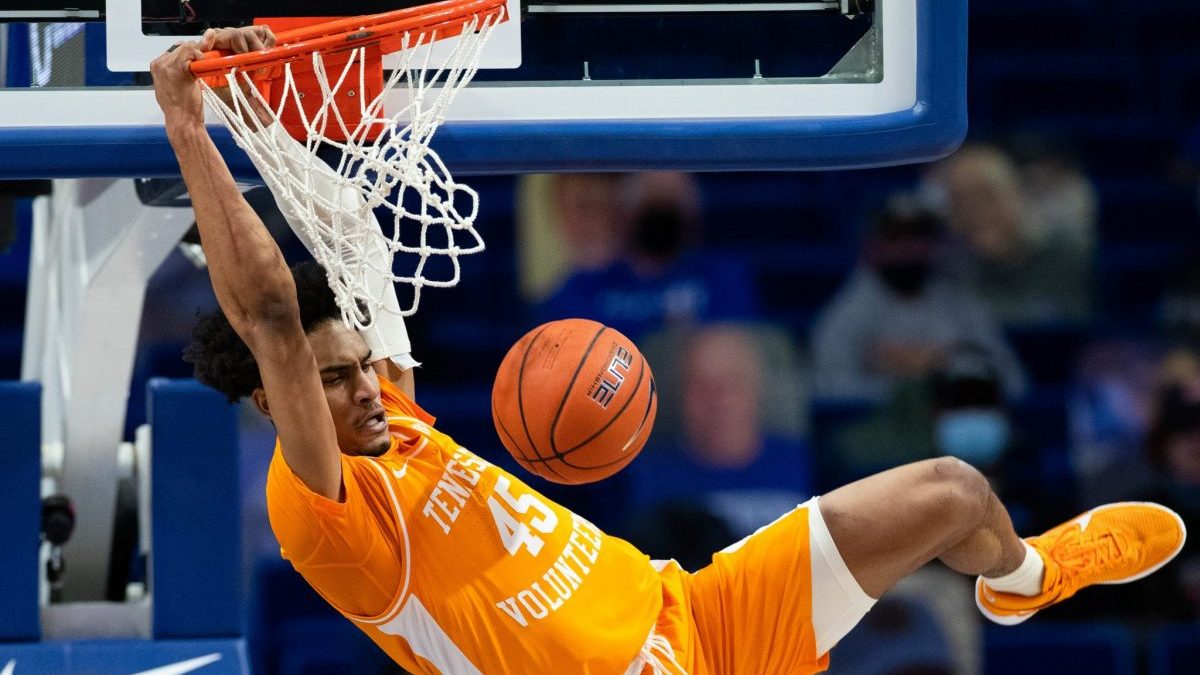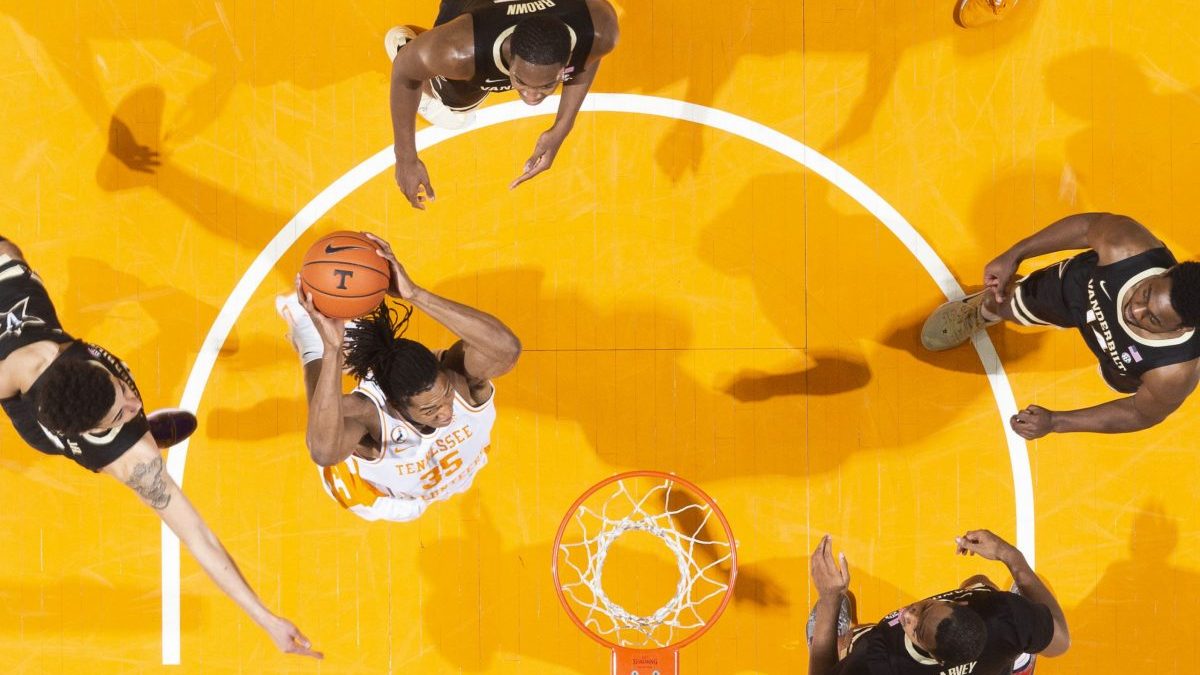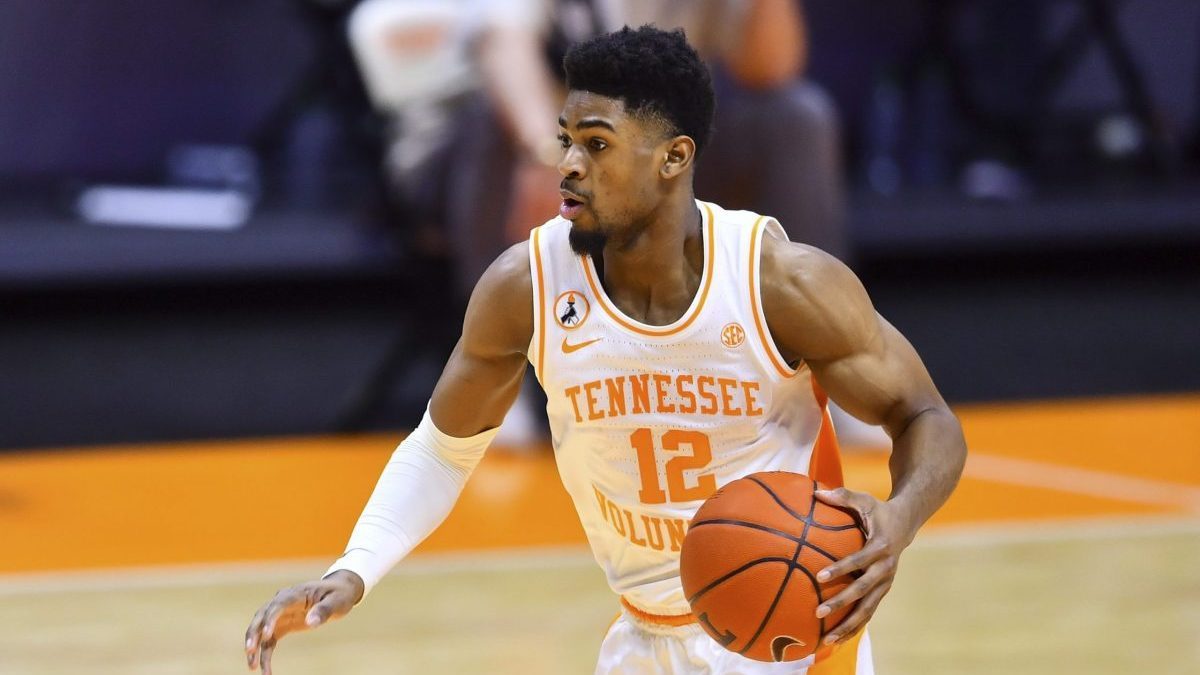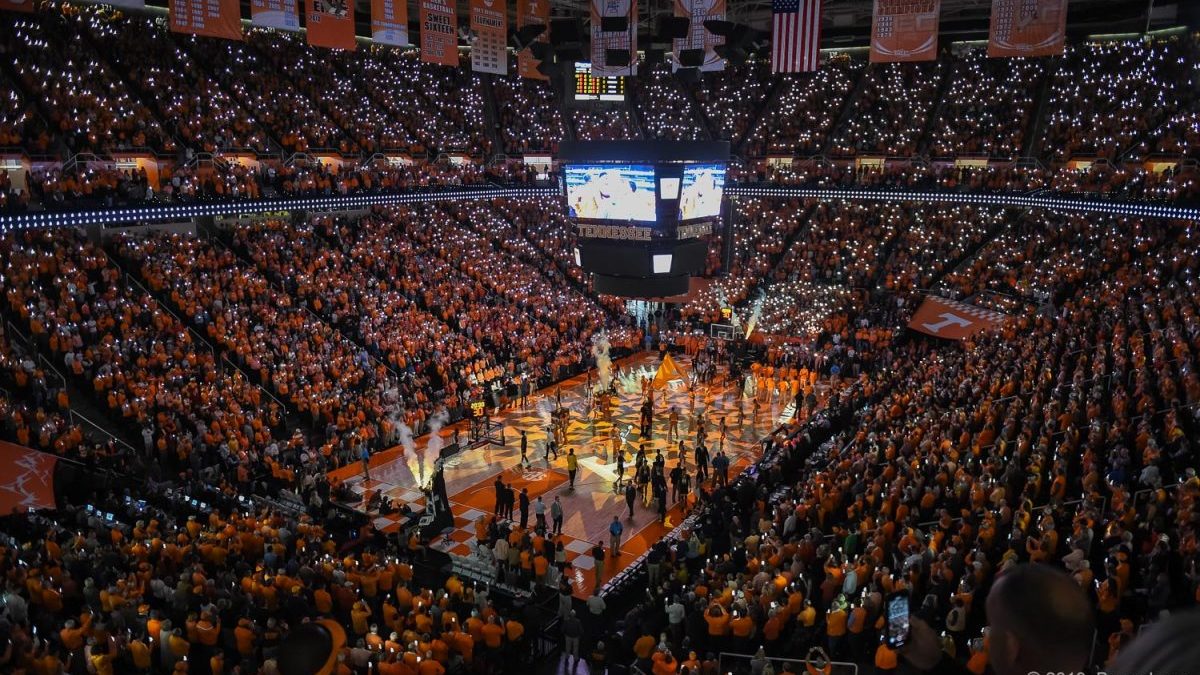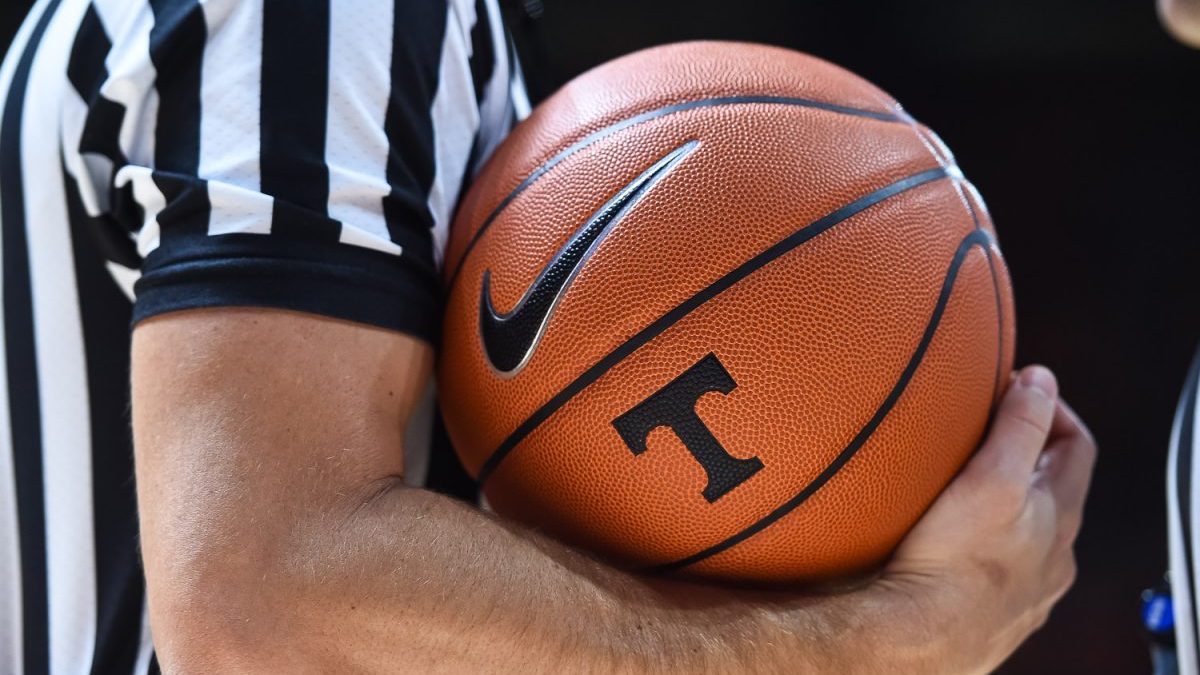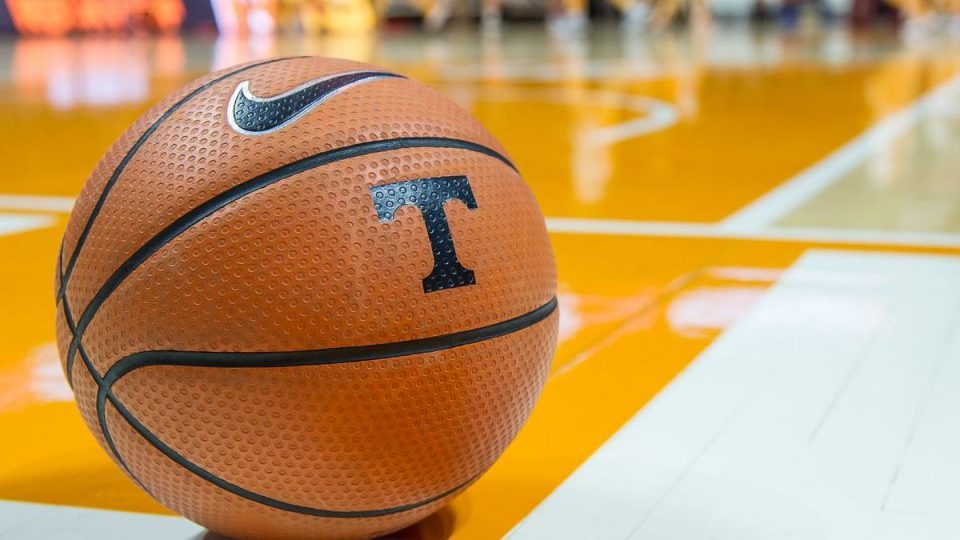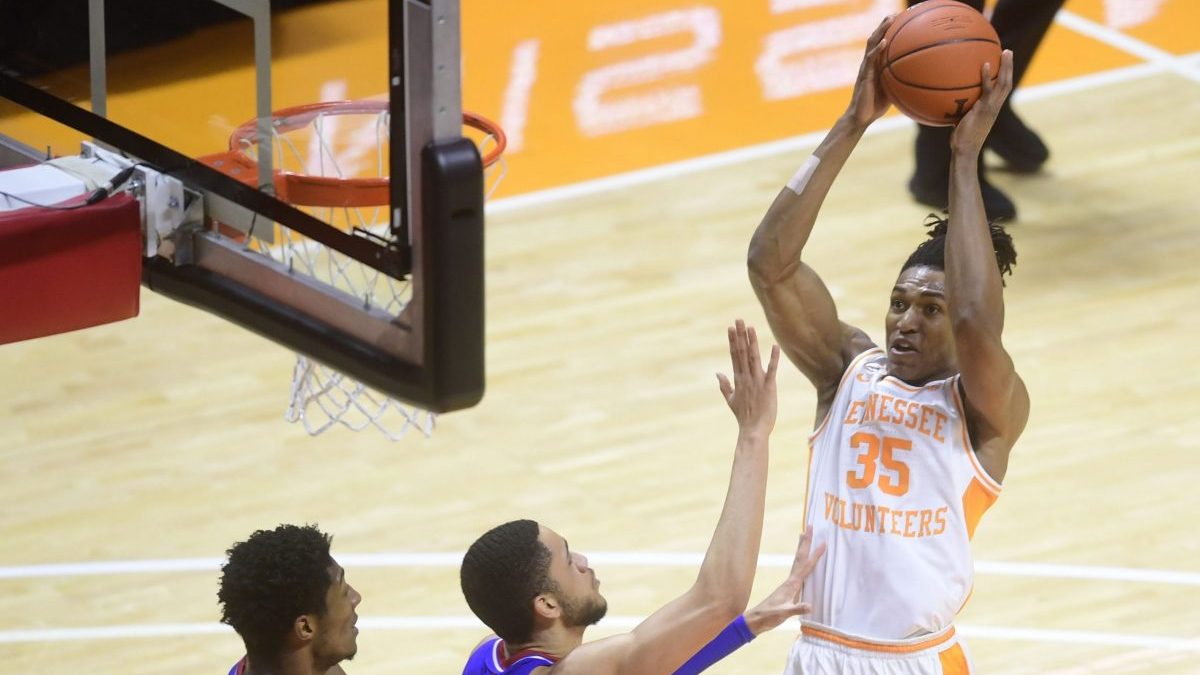[UPDATE 3.14.21] We’ve updated this post following Thursday’s action. A coin flip between Kentucky and Mississippi State went the other way by a point, but changes nothing about the remaining projections.
[UPDATE 3.13.21] And now we’ve updated following Friday’s action. No surprises Friday (except for a sucker elbow or two), so we’re still pinning our hopes on a probably-undermanned Vols team pulling an even bigger upset Saturday afternoon against a rolling Alabama squad.
[UPDATE 3.14.21] The Vols lost their opportunity to upset Alabama Saturday, and so won’t get a chance against LSU today. Shame, too, as the machine would have liked them to win that one. As it is, it’s predicting Alabama to beat LSU for the tournament championship in addition to the regular season championship.
For you busy types: The most likely path for the Vols to win the SEC Tournament this week would be to win the games they should be favored to win, win as a slight underdog to Alabama, and have Arkansas lose to a slight underdog in Missouri on the other side of the bracket.
Now for those of you holding warm cups of coffee:
We haven’t been publishing the results of the GRT Hoops Statsy Preview Machine this season because it’s still an angsty teenager. It has real promise, but it’s still in that frightening stage where it will make you beam with parental pride one minute and squirt zit juice onto the mirror the next.
Since I started tracking it back in early January, the machine has projected the correct winner about 69% of the time. That may sound low until you realize that literally hundreds of games are decided by a single possession. Against the spread, the machine currently at 52.8%. When its projection deviates from the Vegas spread by at least 9 points, it’s 55.99%, and when it deviates by at least 20, it’s 73.91%. Unlike in football, there does not appear to be a “sweet spot,” meaning it’s results get better as its projections get further away from the Vegas spreads. I’ve been tracking the results of the machine based on the two best comps, the five best comps, the 10 best comps, and all comps and found that the 10 best comps version almost always gets the best results. In some cases, all comps is slightly better. What I haven’t been able to track yet is what happens if it only uses the 10 most recent comps. I suspect that will improve the results, but it’s yet to be tested.
So, take all of that for what it’s worth, but I’ve run the SEC men’s basketball bracket through the machine to see what it thinks. The results are below and point to a path where Tennessee could hoist the trophy on Sunday. For easy reference, here’s the 2020-21 SEC men’s basketball tournament bracket with all of the tip times and broadcasts.
Wednesday, March 10
| VU 79 TAM 68 | Lower Seed | Projected Winner | Win % | Result |
| 12 Vanderbilt | 13 Texas A&M | Vanderbilt | 52.8% | VU 79 TAM 68 |
[UPDATE: 3.11.21] So far, so good.
Thursday, March 11
| OM 76 SC 59 | Lower Seed | Projected Winner | Win % | Result |
| 8 Kentucky | 9 Mississippi State | Kentucky | 51.9% | MSU 74 KY 73 |
| 5 Florida | 12 Vanderbilt | Florida | 75.1% | FL 69 VU 63 |
| 7 Missouri | 10 Georgia | Missouri | 75.1% | MO 73 GA 70 |
| 6 Ole Miss | 11 South Carolina | Ole Miss | 86.7% | OM 76 SC 59 |
The odds are pretty good that the chalk holds today, although it looks like that 8 vs. 9 matchup between Kentucky and Mississippi State could really go either way. Sounds funky, right? But the Wildcats needed double overtime to beat the Bulldogs back on January 2, so maybe it’s not so weird. But wait, haven’t they gotten a lot better since New Year’s? I suppose, but they are still 4-5 since February and 1-2 in their last three outings.
[UPDATE: 3.12.21] Yep, the Kentucky-Mississippi State game was basically a toss-up, as the Bulldogs won by a single point. With the exception of being just on the other side of that coin-flip, the machine earns a pat on the back for this day.
Friday, March 12
| LSU 76 OM 73 | Lower Seed | Projected Winner | Win % | Result |
| 1 Alabama | 9 Mississippi State | Alabama | 76.9% | AL 85 MSU 48 |
| 4 Tennessee | 5 Florida | Tennessee | 61.5% | TN 78 FL 66 |
| 2 Arkansas | 7 Missouri | Arkansas | 61.5% | AR 70 MO 64 |
| 3 LSU | 6 Ole Miss | LSU | 71.5% | LSU 76 OM 73 |
It’s chalk all day long on Friday, although Tennessee looks vulnerable to me just because no number is trustworthy when it comes to the Vols this season.
Surprisingly, Arkansas may also be somewhat vulnerable to Missouri Friday afternoon. The Hogs have been rolling (do Hogs roll?) as of late, but most of their February win streak has come against unranked teams (with the notable exception of No. 6 Alabama.) Also, Arkansas needed overtime to beat Missouri on February 13. So watch that one. It could have important implications for Sunday.
[UPDATE 3.12.21] Mississippi State beating Kentucky by one point on Thursday changes nothing but the names going forward.
[UPDATE 3.13.21] Yep, chalk all day long Friday. Missouri was unable to pull off the upset against the Hogs, much to our distress. But we’ll worry about that if we are able to get past Alabama at 1:00 Saturday on ESPN.
Saturday, March 13
| AL 73 TN 68 | Lower Seed | Projected Winner | Win % | Result |
| 1 Alabama | 4 Tennessee | Alabama | 55.6% | AL 73 TN 68 |
| 2 Arkansas | 3 LSU | Arkansas | 71.5% | LSU 78 AR 71 |
This is where the numbers say Tennessee bows out, but they’re not especially confident about it. Like every game since mid-January, it all depends on which Vols team shows up. They’re only a slight underdog, and if it’s the right team at the right time, this is where they could get over the hump.
[UPDATE 3.13.31] This morning, the machine likes the Vols less than it did when the original predictions were made Thursday morning. It currently has Alabama winning by 6 and giving them a 72% chance of winning. Vegas, however, is slightly more optimistic, putting the line at Alabama -4.5, a 66% chance of winning. We’ll see. Fulkerson is doubtful.
[UPDATE 3.14.21] Tennessee looked like they might get it done against favorite Alabama Saturday, but alas, the Tide caught up and did the good guys in. LSU did pull off the upset against the Hogs, though, so that’s the first real miss for the machine in the tournament.
Sunday, March 14
| Higher Seed | Lower Seed | Projected Winner | Win % |
| 1 Alabama | 3 LSU | Alabama | 77% |
Assuming this is the championship matchup, it should be a good one. Our machine likes the underdog to win a close one.
[UPDATE 3.14.21] Although the machine liked 2 seed Arkansas over 1 seed Alabama, it does not like 3 seed LSU over the Tide at all. We’ll see.
What ifs
[UPDATE 3.14.21] With the lost opportunity against Alabama Saturday, there are no more what ifs for the Vols. I’ve left everything below for the record.
What if Tennessee gets past Alabama on Saturday and meets Arkansas on Sunday? The Hogs would have a 71.5% chance of winning that one, according to our machine. Bad news.
Okay, but what if Tennessee makes it to Sunday and meets a Missouri team that knocked out Arkansas on Friday? That, my friends, would give the Vols their own 71.5% chance of winning. Good news.
And what if it’s LSU representing the other side of the bracket on Sunday? Tennessee would have a 55.6% chance of winning. Maybe kinda good news?
So . . . anything can happen, of course, but the path with the fewest thistles and snakes appears to be the following:
- Tennessee beats Florida Friday, wins as a slight underdog to Alabama on Saturday, and advances to Sunday.
- Meanwhile, Missouri knocks Arkansas out Friday, and either Missouri or LSU make it to Sunday.
As long Arkansas does not emerge from the other side of the bracket, the Vols would only need to win one game as a slight underdog.
Go Vols.
